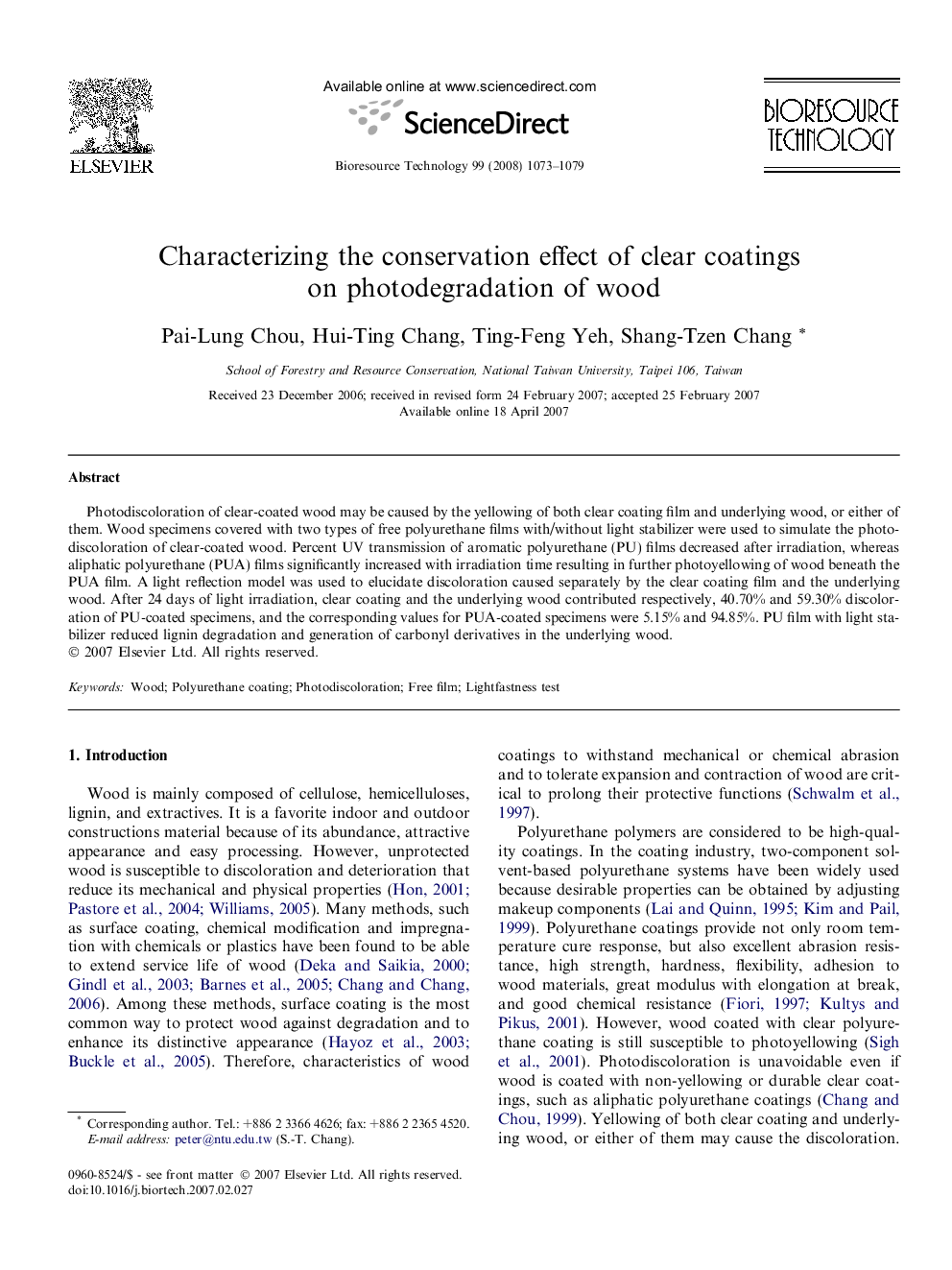| Article ID | Journal | Published Year | Pages | File Type |
|---|---|---|---|---|
| 685384 | Bioresource Technology | 2008 | 7 Pages |
Photodiscoloration of clear-coated wood may be caused by the yellowing of both clear coating film and underlying wood, or either of them. Wood specimens covered with two types of free polyurethane films with/without light stabilizer were used to simulate the photodiscoloration of clear-coated wood. Percent UV transmission of aromatic polyurethane (PU) films decreased after irradiation, whereas aliphatic polyurethane (PUA) films significantly increased with irradiation time resulting in further photoyellowing of wood beneath the PUA film. A light reflection model was used to elucidate discoloration caused separately by the clear coating film and the underlying wood. After 24 days of light irradiation, clear coating and the underlying wood contributed respectively, 40.70% and 59.30% discoloration of PU-coated specimens, and the corresponding values for PUA-coated specimens were 5.15% and 94.85%. PU film with light stabilizer reduced lignin degradation and generation of carbonyl derivatives in the underlying wood.
